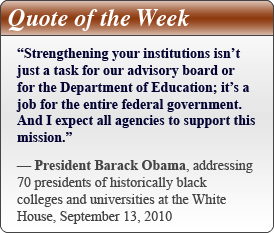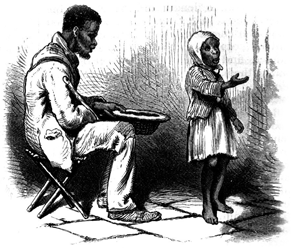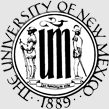There Is Little Racial Disparity in Student Acceptance Rates at Harvard
 For the past 18 years, JBHE has conducted a survey of black first-year students at the nation’s highest-ranked liberal arts colleges and universities. In addition to enrollment figures we ask about the number of black students who apply to and are accepted at a given institution. A handful of the highest-ranking institutions, including Dartmouth, Stanford, and Duke, routinely decline to provide all the information requested by JBHE. For the past 18 years, JBHE has conducted a survey of black first-year students at the nation’s highest-ranked liberal arts colleges and universities. In addition to enrollment figures we ask about the number of black students who apply to and are accepted at a given institution. A handful of the highest-ranking institutions, including Dartmouth, Stanford, and Duke, routinely decline to provide all the information requested by JBHE.
There may be any number of reasons why certain universities do not want to divulge particular statistics on their number of black applicants or admits. We have speculated that some institutions may not want to divulge their black student acceptance rate if that rate were considerably higher than the rate for white students. Such information might anger conservative alumni who are opposed to race-sensitive affirmative action. And a disgruntled alumnus or alumna may be less likely to donate money to the university.

Over the years, Harvard University has usually declined to divulge the number of black applicants to its entering class. Thus, we were unable to calculate if blacks were accepted to Harvard at a rate far greater than that for whites or other ethnic groups.
Harvard’s leadership and large numbers of its prominent faculty have voiced strong opinions in favor of race-based affirmative action. Some observers may have concluded that because Harvard has been a champion of affirmative action and also usually declines to divulge information on black applicants that the black acceptance rate would be significantly higher than the overall acceptance rate. But this is not the case, at least for 2010. The numbers released by Harvard this year show that acceptance rates for black and white students are almost identical. This year, Harvard accepted only 8.3 percent of its black applicants. This is only a slightly higher rate than for applicants as a whole.
There are 155 black first-year students at Harvard this fall. They make up 9.3 percent of all Harvard freshmen.

NATIONAL WAR COLLEGE

Dean of Faculty
The National War College is seeking a Dean of Faculty and Academic Programs. The college presents a ten-month, accredited course in national security, with a special emphasis on national security strategy, to approximately 220 mid-career military officers and government employees. Graduates receive a Masters in National Security Strategy. The 65 person faculty is an eclectic mix of civilian academicians, military officers, and senior officials from federal agencies.
The Dean supervises curriculum development and execution, directs faculty hiring, development, and renewal processes, serves as a primary interlocutor with the National Defense University and its various components, maintains professional relationships with decision-makers and leading authorities in Washington, DC, and teaches graduate level seminars at the National War College.
The successful candidate will bring a mix of experiences to the position—some combination of scholarly achievement, leadership skill, senior government and/or military positions, and prior management positions in academic settings. The War College is looking for a leader willing and able to offer leadership in all realms for which the position is responsible—intellectual, managing the institution, and managing people. Salary and benefits are very competitive. Start date is negotiable, but not later than 1 July 2011. The full vacancy announcement, to include application instructions, conditions of employment, and desirable candidate qualifications is available at http://www.usajobs.gov or Leigh Ann Massey Berdy at (202)685-2137 about Job Announcement Number NDU-114-10.

Newsweek’s List of the Most Diverse College Campuses
 It seems like everyone is getting into the college rankings competition. U.S News & World Report remains the most widely cited ranking organization but many others are jumping on the bandwagon. It seems like everyone is getting into the college rankings competition. U.S News & World Report remains the most widely cited ranking organization but many others are jumping on the bandwagon.
Newsweek recently released its rankings of the colleges and universities with the most diverse student bodies. To compile its rankings, the magazine considered the percentage of black and Hispanic students and the percentage of women in the student body. Also, the magazine factored in geographic and socioeconomic diversity. The percentage of students from out of state, the percentage of foreign students, and the percentage of students from low-income families (as measured by the percentage of students receiving federal Pell Grants) were components of the ranking. Finally, Newsweek gave positive weight to campuses that were identified as “gay-friendly” by other organizations.
Using these criteria, the University of Pennsylvania was ranked as having the most diverse student body. Brown University ranked second and Oberlin College was third. Rounding out the top 10 most diverse campuses were Swarthmore College, New York University, American University, Wesleyan University, Duke University, Princeton University, and MIT.
Financial Crisis Prompts Resignation of the Entire Board of Trustees at Charles R. Drew University of Medicine and Science
 The interim president and the entire board of trustees of Charles R. Drew University of Medicine and Science in Los Angeles have resigned. In their place the board selected a group of higher education and medical leaders from the area to oversee the troubled institution. Charles R. Drew University is facing loan repayments of $43 million, money it does not have. The interim president and the entire board of trustees of Charles R. Drew University of Medicine and Science in Los Angeles have resigned. In their place the board selected a group of higher education and medical leaders from the area to oversee the troubled institution. Charles R. Drew University is facing loan repayments of $43 million, money it does not have.
The university was founded in 1966 to train physicians who would work in minority neighborhoods. The university has had numerous financial, organizational, and leadership problems in recent years.
The new 11-member board includes the deans of the medical schools at UCLA and the University of Southern California. It is chaired by M. Roy Wilson, chancellor emeritus of the University of Colorado at Denver. It is hoped that the new leadership will be able to garner financial support from the University of California system.
Controversy at Texas Southern University Over the Destruction of Two Murals
 John Rudley, president of historically black Texas Southern University in Houston, ordered workers to paint over two murals that had been created over 40 years ago in the Hannah Hall administration building. The murals were painted in 1970 and 1971 by Harvey Johnson, who was a student at Texas Southern at the time and subsequently taught at the university for 34 years before his retirement in 2007. Johnson was devastated when he heard the news that his murals had been destroyed. John Rudley, president of historically black Texas Southern University in Houston, ordered workers to paint over two murals that had been created over 40 years ago in the Hannah Hall administration building. The murals were painted in 1970 and 1971 by Harvey Johnson, who was a student at Texas Southern at the time and subsequently taught at the university for 34 years before his retirement in 2007. Johnson was devastated when he heard the news that his murals had been destroyed.
One mural was called “Dere’s a Han’ Writin on de Wall.” President Rudley reportedly objected to poor spelling. He told the Houston Chronicle, “When I bring dignitaries to campus, I can’t have them seeing that kind of thing. All art isn’t good art.”
After student and faculty protests, President Rudley announced that he was earmarking $50,000 to hire a conservator who will review the remaining murals and will develop a plan for their restoration, preservation, and conservation.
University of Arkansas Makes Progress in Racial Diversity, But Still Has Much Work to Do
 The University of Arkansas at Fayetteville reports that, this fall, student enrollments have reached an all-time high. The university saw an increase in minority students in every major ethnic category. Overall minority student enrollments are up 16.6 percent from a year ago. Underrepresented minorities make up 15.5 percent of the student body. The University of Arkansas at Fayetteville reports that, this fall, student enrollments have reached an all-time high. The university saw an increase in minority students in every major ethnic category. Overall minority student enrollments are up 16.6 percent from a year ago. Underrepresented minorities make up 15.5 percent of the student body.
There are 1,128 African-American students on campus this fall, an increase of 88 black students from a year ago. Blacks are now 5.3 percent of the total enrollments.
Despite the progress that has been achieved, it must be noted that the flagship state university still has a long way to go in terms of racial diversity. Blacks make up 15.8 percent of the total population in Arkansas.

UNIVERSITY OF NORTH CAROLINA ASHEVILLE

Tenure-Track Assistant or Associate Professor of Rhetoric and Composition
The Department of Literature and Language seeks applicants for a tenure-track assistant or associate professor of rhetoric and composition beginning August 2011. Ph.D. in rhetoric and composition or Ph.D. in related field with comparable administrative and/or classroom experience required. The candidate will be expected to teach composition courses regularly within the department. Background in teaching secondary English and training in linguistics considered a plus. Candidates with secondary areas of teaching and research specialization in composition and identity, rhetoric and gender, ethnic rhetorics, rhetoric and race, rhetoric and ethnic/minority literatures, rhetoric and global literatures, writing and disability, and related fields are strongly encouraged to apply. We invite an interdisciplinary background that would enable active participation in other programs across campus, such the writing-intensive program. Ideally, the candidate would also be prepared to teach in Humanities, but could also potentially contribute to Africana Studies, Women, Gender and Sexuality Studies, Honors, or in our Integrative Liberal Studies program, the University’s interdisciplinary liberal arts program required of all its undergraduates.
UNC Asheville is the designated public liberal arts university in the North Carolina system and boasts a dynamic interdisciplinary writing culture in one of the most livable regions in the country. UNC Asheville is committed to diversity, and women and minorities are strongly encouraged to apply. We are an Equal Opportunity/Affirmative Action Employer.
Application procedure: Send cover letter, vita, teaching philosophy, and three reference letters to Dr. Lorena Russell, Chair, Dept. of Literature & Language, CPO #2130, University of North Carolina at Asheville, One University Heights, Asheville, NC 28804. Deadline October 22nd. Email inquiries to Dawn McCann, Dept. Assistant, dmccann@unca.edu.

Appointments, Promotions, and Resignations
 • Scheherazade Forman was appointed dean of student development services at Prince George’s Community College in Maryland. She was the coordinator of articulation and transfer at Baltimore City Community College. • Scheherazade Forman was appointed dean of student development services at Prince George’s Community College in Maryland. She was the coordinator of articulation and transfer at Baltimore City Community College.
Dr. Forman holds bachelor’s and master’s degrees from the University of Maryland at College Park and a doctoral degree from Morgan State University.
 • Samuel N. Addy was appointed assistant dean for outreach at the Culverhouse College of Commerce and Business Administration of the University of Alabama. Dr. Addy will continue to serve as director of the university’s Center for Business and Economic Research. • Samuel N. Addy was appointed assistant dean for outreach at the Culverhouse College of Commerce and Business Administration of the University of Alabama. Dr. Addy will continue to serve as director of the university’s Center for Business and Economic Research.
Dr. Addy is a graduate of the University of Science and Technology in Ghana. He holds a master’s degree from the University of Minnesota and a Ph.D. in mineral economics from Pennsylvania State University.
 • Esther S. Powell was promoted to director of adult student services and evaluation at Winston-Salem State University in North Carolina. She was serving as director of student advocacy and services for adult and graduate students. • Esther S. Powell was promoted to director of adult student services and evaluation at Winston-Salem State University in North Carolina. She was serving as director of student advocacy and services for adult and graduate students.
Dr. Powell holds a master’s degree from North Carolina A&T State University and a doctorate from Northcentral University in Prescott Valley, Arizona.
 • Michael L. McFrazier was named vice provost and dean of the Northwest Houston Center campus of Prairie View A&M University. He has been serving as associate provost and associate vice president for academic affairs at the university’s main campus. • Michael L. McFrazier was named vice provost and dean of the Northwest Houston Center campus of Prairie View A&M University. He has been serving as associate provost and associate vice president for academic affairs at the university’s main campus.
Dr. McFrazier holds a bachelor’s degree and two master’s degrees from Baylor University. He earned an educational doctorate at the University of Arkansas at Fayetteville.
 • Donald M. Carter was selected as chief diversity officer at Hamilton College in Clinton, New York. He is a professor of Africana studies at the college. • Donald M. Carter was selected as chief diversity officer at Hamilton College in Clinton, New York. He is a professor of Africana studies at the college.
Carter holds a Ph.D. in anthropology from the University of Chicago.
 • Alvin B. Tuck was hired as choir director at Voorhees College in Denmark, South Carolina. He was director of vocal choral activities and associate professor of music at Fort Valley State University in Georgia. • Alvin B. Tuck was hired as choir director at Voorhees College in Denmark, South Carolina. He was director of vocal choral activities and associate professor of music at Fort Valley State University in Georgia.
A graduate of Troy State University, Tuck holds a master’s degree in music education from Alabama State University.
 • Robert Z. Carr is the new dean of the School of Education and Psychology at Alcorn State University in Mississippi. He was dean of the School of Education and Behavioral Sciences at Langston University in Oklahoma. • Robert Z. Carr is the new dean of the School of Education and Psychology at Alcorn State University in Mississippi. He was dean of the School of Education and Behavioral Sciences at Langston University in Oklahoma.
Dean Carr is a graduate of Tougaloo College. He holds master’s degrees from Walden University and Oklahoma State University. He also earned an educational doctorate at Oklahoma State.
 • Wilbourne Rusere was named director of budget and analysis at Winston-Salem State University in North Carolina. Rusere has been an administrator at the university since 2004. • Wilbourne Rusere was named director of budget and analysis at Winston-Salem State University in North Carolina. Rusere has been an administrator at the university since 2004.


UNIVERSITY OF CENTRAL FLORIDA

Department Chair, Department of Legal Studies
The University of Central Florida invites applications for the position of Chair of the Department of Legal Studies, established in 1973. UCF seeks an innovative, energetic leader to solidify and promote the newly formed department, established July 2010. Candidates must have an outstanding record of teaching and scholarly achievement commensurate with a tenured faculty appointment at the rank of associate or full professor. Candidates must also possess a law degree or a law degree and a doctorate in an appropriate related field; effective communication and interpersonal skills; demonstrated leadership and administrative ability. Candidates must have prior experience in the active practice of law in the public or private sector and must have maintained membership in good standing with a state bar, with no prior disciplinary record.
Applicants should possess a solid background in budgetary matters, academic programming, enrollment management, distance learning and experience with branch campuses. The Department has significant interaction with and strong support from Central Florida’s legal and law enforcement communities and numerous partnerships with public and private organizations. Successful candidates will have the ability to collaborate with internal and external stakeholders and to sustain and expand upon the Department’s community partnerships.
Consideration of applications, for an August 8, 2011 start date, or earlier, will begin October 8, 2010. To apply for this position, visit the website www.jobswithucf.com and attach a letter of interest describing leadership, administrative, teaching, and professional legal experience; curriculum vitae; names, addresses and phone numbers of three professional references.
UCF is an equal opportunity, affirmative action employer. The university makes selection materials available for public review in accordance with Florida statute. Please consult theUCF website: www.ucf.edu or Department website: http://www.cohpa.ucf.edu/legalstudies/.

Grants and Gifts
• Cornell University received a $1.7 million research grant from the Bill and Melinda Gates Foundation for genetics research to develop new maize and sorghum varieties that will be better suited for the climate in sub-Saharan Africa.
• The University of Maryland Eastern Shore received two grants from the U.S. Department of Education totaling $393,713 to increase the number of black and other minority students seeking degrees in scientific, engineering, and mathematical fields.
• Meharry Medical College, the historically black educational institution in Nashville, Tennessee, received a $6.6 million grant from the U.S. Department of Health and Human Services to fund a program seeking to increase the number of primary-care physicians, dentists, and nurses who practice in underserved, low-income areas.
• Virginia State University, the historically black educational institution in Petersburg, received a $1.5 million grant from the Reginald F. Lewis Foundation for student and faculty support programs.
|
On the SAT, Black Students Score Lower Than Every Other Major Ethnic Group in the United States
Last week, JBHE reported that the racial gap in SAT scores has expanded over the past 20 years. In 2010 the mean black score on the critical reading and mathematics portion of the SAT is 207 points lower than the similar score for whites. (Each section of the SAT is graded on a scale of 200 to 800.)
But black performance on the SAT is not only significantly lower than that for white students, the mean black score is lower than the average score for every other major ethnic group in the United States, including Mexican Americans, Puerto Ricans, and American Indians.


The New President of Tuskegee University
 Tuskegee University in Alabama was founded in 1881 by Booker T. Washington. Since that time it has had only five presidents. Now the board of trustees has announced that on November 1, Gilbert L. Rochon will become the sixth president of the institution. Tuskegee University in Alabama was founded in 1881 by Booker T. Washington. Since that time it has had only five presidents. Now the board of trustees has announced that on November 1, Gilbert L. Rochon will become the sixth president of the institution.
Dr. Rochon has a solid background in science. He is currently senior research scientist at the Rosen Center for Advanced Computing and director of the Terrestrial Observatory at Purdue University in West Lafayette, Indiana. He has also served as associate vice president for collaborative research and engagement at Purdue. He is the founding editor of the Journal of Terrestrial Observation.
Earlier in his career Rochon was director of the Dorchester Mental Health Center at Boston State Hospital and the Conrad Hilton Endowed Professor and director of the Urban Studies and Public Policy Institute at Dillard University.
Dr. Rochon is a native of New Orleans and graduated from Xavier University of Louisiana. He holds a master of public health degree from the Yale School of Medicine and a Ph.D. from the Massachusetts Institute of Technology.
The Persisting Racial Income Gap: For African Americans, a Major Barrier to Equal Access to Higher Education
The U.S. Census Bureau reports that in 2009 the median household income for African-American families was $32,584. This means that half of all black households had incomes above this figure and half of black households had incomes below this threshold.
For non-Hispanic whites, the median income in 2009 was $54,461. Thus, the median income of black families in the United States was less than 60 percent of the median income of non-Hispanic white families. This ratio has remained relatively constant for about the past 40 years.
This large and stagnant income gap between black and white families remains for African Americans a major barrier to equal access to higher education in this country.


UNIVERSITY OF NORTH CAROLINA ASHEVILLE

Assistant Professor, Management
The Department of Management and Accountancy at the University of North Carolina Asheville (UNC Asheville) invites applications for a tenure-track Assistant Professor position in Management, to begin Fall 2011. A strong preference will be given to those with an academic background in Strategic Management, but other Management disciplines may be considered. The successful candidate should possess a doctorate in Management, preferably from an AACSB accredited college of business. ABDs close to completion date may also be considered for this position. The successful candidate will teach Management Strategies and Policy and other related management courses. Candidates must demonstrate excellent teaching skills and an ability to perform research commensurate with maintaining currency in the discipline in an undergraduate environment. A research stream in the area of Strategic Management is preferred, but candidates with teaching and research specialization in management and globalization, management and workplace diversity, diversity leadership, and minority entrepreneurship are strongly encouraged to apply.
The successful candidate should be a self-starter who enjoys teaching and involvement in academic advising, student internships, and student research projects. The successful candidate will also teach in our Integrative Liberal Studies program, our interdisciplinary liberal arts curriculum, in areas such as, but not limited to, introductory (freshman) colloquia, intensives (diversity, writing, information literacy, and quantitative), and/or our Humanities Program.
UNC Asheville is a liberal arts university and seeks faculty who possess the ability to work in an interdisciplinary environment. The University is an Affirmative Action, Equal Opportunity Employer. Candidates should send a current vita, a statement of teaching philosophy, three references and evidence of teaching ability to:
Dr. Bryan S. Schaffer, Recruitment Chair
UNC Asheville
Department of Management and Accountancy, CPO#1850
One University Heights
Asheville, North Carolina 28804-8507.
Application review begins immediately.

Historically Black University Holds Conference on Goat Meat Production
 Florida A&M University, the historically black educational institution in Tallahassee, recently hosted the inaugural National Goat Conference. It is believed to be the first ever conference on the goat livestock industry held by an academic institution in the United States. Florida A&M University, the historically black educational institution in Tallahassee, recently hosted the inaugural National Goat Conference. It is believed to be the first ever conference on the goat livestock industry held by an academic institution in the United States.
 Ray Mobley, director of cooperative extension programs at Florida A&M, organized the conference. He notes that, internationally, goat is the most popular meat source. In the United States, about 2.5 million goats were herded this year. This is up 25 percent from five years ago. The popularity of goat meat in this country is primarily due to an increase in the immigrant population from the Caribbean, Southeast Asia, and the Middle East, where goat meat is popular. Ray Mobley, director of cooperative extension programs at Florida A&M, organized the conference. He notes that, internationally, goat is the most popular meat source. In the United States, about 2.5 million goats were herded this year. This is up 25 percent from five years ago. The popularity of goat meat in this country is primarily due to an increase in the immigrant population from the Caribbean, Southeast Asia, and the Middle East, where goat meat is popular.
Dr. Mobley is a graduate of Florida A&M University. He holds a master’s degree in public health from Tulane University and a degree in veterinary medicine from Tuskegee University.
Vanderbilt University Makes Solid Progress in Enrolling Black Students
 This fall, Vanderbilt admitted 18 percent of all applicants. It was the most selective class in the university’s history. This fall, Vanderbilt admitted 18 percent of all applicants. It was the most selective class in the university’s history.
There are 179 black freshmen on campus this fall. They make up 11.2 percent of the first-year class. Last year there were 125 black freshmen at Vanderbilt. They were 7.8 percent of all first-year students.
One reason for the significant 43 percent increase in black freshmen is the university’s new financial aid program which converted loans for low-income students to outright scholarship grants. This produced a sharp jump in black applicants and increased black student yield.
Recent Books That May Be of Interest to African-American Scholars
 The JBHE Weekly Bulletin regularly publishes a list of new books that may be of interest to our readers. Here are the latest selections. The JBHE Weekly Bulletin regularly publishes a list of new books that may be of interest to our readers. Here are the latest selections.
• Afro-Mexico: Dancing Between Myth and Reality by Anita Gonzalez (University of Texas Press)
• Before Brown: Heman Marion Sweatt, Thurgood Marshall, and the Long Road to Justice by Gary M. Lavergne (University of Texas Press)
• Benching Jim Crow: The Rise and Fall of the Color Line in Southern College Sports, 1890-1980 by Charles H. Martin (University of Illinois Press)
• Beyond Katrina: A Meditation on the Mississippi Gulf by Natasha Trethewey (University of Georgia Press)
• Black Families in Britain as the Site of Struggle edited by Bertha Ochieng and Carl Hylton (Manchester University Press)
• Black Megachurch Culture: Models for Education and Empowerment by Sandra L. Barnes (Peter Lang Publishing)
• Crossing the Creek: The Literary Friendship of Zora Neale Hurston and Marjorie Kinnan Rawlings by Anna Lillios (University Press of Florida)
• Lincoln and Darwin: Shared Visions of Race, Science, and Religion by James Lander (Southern Illinois University Press)
• Neither Jew Nor Gentile: Exploring Issues of Racial Diversity on Protestant College Campuses by George Yancey (Oxford University Press)
• Preaching With Sacred Fire: An Anthology of African American Sermons, 1750 to the Present edited by Martha Simmons and Frank A. Thomas (W.W. Norton)
• Reds, Whites, and Blues: Social Movements, Folk Music, and Race in the United States by William G. Roy (Princeton University Press)
• Social Work With African American Males: Health, Mental Health, and Social Policy edited by Waldo E. Johnson Jr. (Oxford University Press)
• Sweet Solitude: New and Selected Poems by Leonard A. Slade Jr. (State University of New York Press)
• Tasting Freedom: Octavius Catto and the Battle for Equality in Civil War America by Daniel R. Biddle and Murray Dubin (Temple University Press)
• The Quest for Citizenship: African American and Native American Education in Kansas, 1880-1935 by Kim Cary Warren (University of North Carolina Press)
• Thiefing Sugar: Eroticism Between Women in Caribbean Literature by Omise’eke Natasha Tinsley (Duke University Press)
• Tradition and the Black Atlantic: Critical Theory in the African Diaspora by Henry Louis Gates Jr. (Basic Books)
• Venture Smith and the Business of Slavery and Freedom edited by James Brewer Stewart (University of Massachusetts Press)
• What’s Going On? Political Incorporation and the Transformation of Black Public Opinion by Katherine Tate (Georgetown University Press)

UNIVERSITY OF NEW MEXICO

Vertebrate Evolutionary Immunologist
The Biology Department at the University of New Mexico is seeking applications for an Assistant Professor in the area of evolutionary / comparative vertebrate immunology. This position is full-time, tenure-track, and is funded, in part, by an NIH Center of Biomedical Research Excellence (COBRE) award that supports the Center for Evolutionary and Theoretical Immunology (http://ceti.unm.edu).
We seek a colleague who will establish and maintain a vigorous, independent research program, is committed to excellence in teaching at the undergraduate through graduate levels, and is interested in joining a broadly based Biology Department.
Applicants must have a Ph.D. in biology or a related discipline at the time of appointment. Relevant postdoctoral experience preferred.
Applicants must submit a cover letter, curriculum vitae, three representative reprints, and statements of current and future research and teaching interests. All application material must be uploaded and submitted through UNM’s electronic application system, UNMjobs, https://unmjobs.unm.edu. Applicants must also arrange for at least three letters of reference to be sent directly to biohire@unm.edu. Application materials must be received by close of business day, October 29, 2010, for best consideration.
Questions related to this posting may be directed to Dr. Charles Cunningham, ccunnin@unm.edu.
The University of New Mexico is an Equal Opportunity/Affirmative Action Employer and Educator. Women and underrepresented minorities are encouraged to apply.

Honors and Awards
 • Mary Evans Sias, president of Kentucky State University in Frankfort, received the Role Model award from the National Center on Minority Health and Health Disparities. The award was given at the 11th annual National Role Models Conference in Las Vegas. • Mary Evans Sias, president of Kentucky State University in Frankfort, received the Role Model award from the National Center on Minority Health and Health Disparities. The award was given at the 11th annual National Role Models Conference in Las Vegas.
|
 .
.